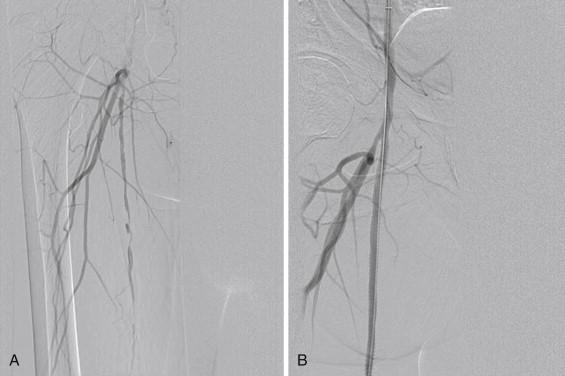Physical Address
304 North Cardinal St.
Dorchester Center, MA 02124
The poor early results and marginal long-term durability of percutaneous transluminal angioplasty in the femoropopliteal segment has prompted growing interest in covered stents in the treatment of occlusive disease. The potential advantages of a minimally invasive internal bypass are significant. The diffusely diseased, highly irregular surface of the superficial femoral artery or popliteal artery is excluded in the process. Most of available clinical data regard the use of stent grafts in patients with long-segment disease.
It is not clear at present which lesions are best treated with covered stents versus bare-metal self-expanding nitinol stents or ultimately surgical bypass ( Table 1 ). Many interventionists use covered stents for Trans-Atlantic Inter-Society Consensus (TASC) C (>15 cm long) and D (>20 cm long) lesions of the superficial femoral artery ( Figure 1 ). The most commonly used and only U.S. Food and Drug Administration (FDA)-approved stent for this indication is the Viabahn graft (Gore, Flagstaff, AZ). This is a nitinol stent surrounded by expanded polytetrafluoroethylene (ePTFE) that can also include a heparin lining. Viabahn is also used in the popliteal artery; it needs to be carefully sized because this artery often tapers somewhat as it descends. There is a greater likelihood of covering important perigenicular collaterals when the stent is deployed in the popliteal artery. There is no correctly sized self-expanding stent graft for the tibial arteries. The Symphony covered stent is a self-expanding covered nitinol stent with more radial force than the Viabahn. Use of this device in the lower extremity is off label.
| Factor to Consider | Endovascular Graft | Standard Stent | Femoral–Popliteal Bypass |
|---|---|---|---|
| Exclude extensive disease | Yes | No | Yes |
| Requires open surgery | No | No | Yes |
| Can exclude collateral | Yes | No | Yes |
| Can occlude suddenly | Yes | Less likely | Yes |

Become a Clinical Tree membership for Full access and enjoy Unlimited articles
If you are a member. Log in here